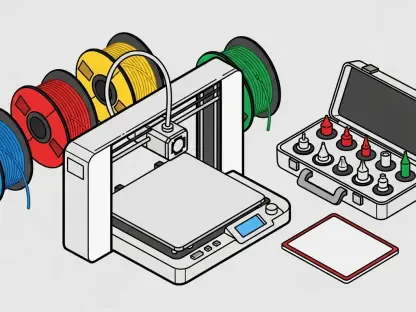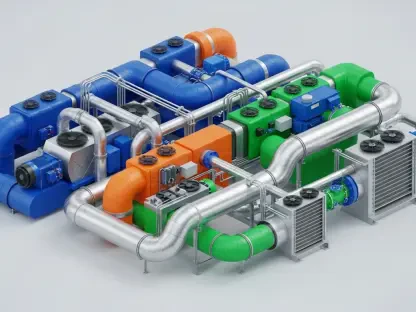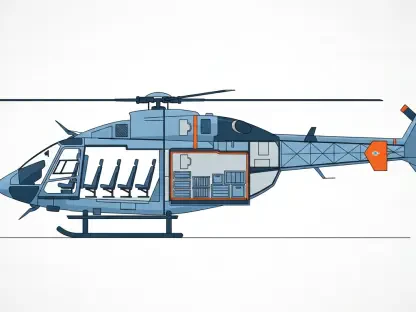In a strategic move emblematic of the shifting landscape within the global paper industry, UPM Communication Papers has announced plans to cease paper production at its Kaukas paper mill in Lappeenranta, Finland, by the end of 2025. This decision reflects a response to the structural overcapacity and declining demand in the global graphic paper market, driven largely by the rise of digitalization, macroeconomic challenges, and the profound transformation in consumer habits. These factors have gradually eroded the demand for traditional graphic papers, compelling major industry players like UPM to reassess and realign their operations. The closure is not merely an isolated measure but part of a calculated effort to enhance UPM’s long-term competitiveness by consolidating and optimizing its resources. By reallocating the production of coated mechanical paper from Kaukas to its Rauma mill, UPM aims to maintain a robust operational model, addressing current market demands while preparing for future innovations in sustainable materials.
Shift to the Rauma Mill
As UPM pivots its production strategy, the shift of coated mechanical paper manufacturing to the Rauma mill emerges as a cornerstone of this recalibration. This site, entrusted with taking over Kaukas mill’s output, is expected to enhance the company’s efficiency and ensure products remain competitive in a challenging market. This transition involves shutting down the paper machine PM 1 at the Kaukas site, which translates to an annual reduction of 300,000 tonnes in coated mechanical paper production capacity. Despite the significant scale of these changes, UPM’s decision aligns with its broader strategy to sustain healthier capacity utilization, facilitating a more secure cost structure and ultimately bolstering its global competitiveness. The Rauma mill, equipped with advanced technology and infrastructure, is poised to meet the challenges of increased production demands while adhering to the high standards set by UPM’s commitment to environmental and economic sustainability. While the transition is poised to enhance operational efficacy, it does not come without its challenges, particularly concerning the workforce. This strategic realignment will have direct implications for approximately 220 employees at the Kaukas site, who face the prospect of job displacement. Recognizing the impact on its workforce, UPM has committed to engaging in meaningful dialogue with the affected employees, ensuring adherence to local legislative frameworks during the co-determination processes. This approach underscores UPM’s dedication to maintaining integrity and transparency, even amidst significant operational upheaval. The company seeks to navigate the complexities of workforce transitions by exploring potential redeployment opportunities and offering support measures that align with its values of corporate responsibility and community support.
Cost Savings and Financial Impact
From a financial perspective, UPM anticipates substantial gains following the closure, citing projected annual fixed cost savings of €32 million. Such savings are expected to stem from streamlined operations and refined resource allocation, facilitating a more agile and financially sustainable business model. However, reaching these goals is accompanied by notable restructuring charges, forecasted at €78 million, which includes a cash impact of €35 million coupled with €43 million in impairments. These costs, though significant, are framed as necessary investments to secure UPM’s long-term market positioning and financial health. The pending closure will affect the comparability of its results in the third quarter of 2025, highlighting the inherent complexities of large-scale strategic adjustments. Beyond the immediate financial implications, UPM’s decision is reflective of a broader strategic orientation toward innovation and sustainability. While the closure represents a significant restructuring effort, the company’s ongoing commitment to operational excellence and market adaptation remains evident. The move also aligns with UPM’s overarching business ethos that prioritizes sustainability, as demonstrated by its expansive portfolio that includes renewable fibers, advanced materials, and decarbonization solutions. UPM’s efforts have not gone unnoticed, garnering acclaim from distinguished entities like EcoVadis and the Dow Jones Sustainability Indices, underscoring its leadership in sustainable practices and material solutions.
Commitment to Sustainability and Market Adaptation
Amidst these transformations, UPM’s broader operational framework continues to drive its mission of sustainability and innovation. Serving as a key player with an annual production capacity of 4.3 million tonnes of graphical paper and employing around 5,000 people worldwide, UPM Communication Papers remain pivotal within UPM’s diverse investment in renewable materials. The planned structural changes underscore UPM’s proactive stance in striving for a delicate balance: catering to current market realities while investing in future-focused, environmentally conscious solutions. Through prudent strategic planning, UPM looks to not only mitigate the immediate challenges posed by fluctuating market dynamics but also to set a course for future growth that aligns with global trends toward sustainable material solutions. By fostering greater efficiency and reinforcing a robust business model, UPM aims to sustain its position at the forefront of the paper production industry. The narrative of UPM’s efforts highlights the continued evolution within the sector, driven by a commitment to sustainable innovation, strategic agility, and a proactive engagement with the challenges of the modern market landscape.
Navigating the Path Forward
In a strategic decision that highlights the shifts in the global paper industry, UPM Communication Papers plans to halt paper production at its Kaukas paper mill in Lappeenranta, Finland, by the close of 2025. This move is a response to the structural excess and waning demand in the global graphic paper market, which has been largely affected by increasing digitalization, economic challenges, and significant changes in consumer behavior. These elements have steadily reduced the need for traditional graphic papers, prompting key industry players like UPM to rethink and restructure their operations. This closure is not an isolated event but part of a strategic effort to bolster UPM’s long-term competitiveness through the consolidation and optimization of its assets. By transitioning the production of coated mechanical paper from Kaukas to its Rauma facility, UPM intends to keep a strong operational framework, meeting present market needs while gearing up for future progress in sustainable materials.









